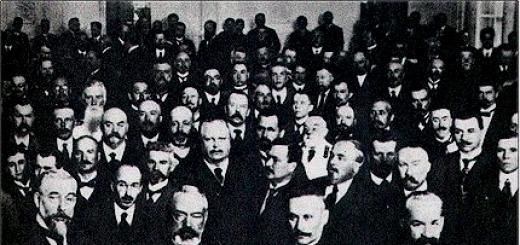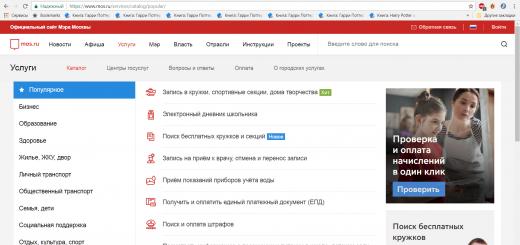Last Updated On: November 21, 2018
The first step in getting your blog noticed is creating lots of useful, relevant and compelling content.
Additionally, your content needs to resonate with your audience.
In other words, your content needs to vibe with your readers. It needs to be clear, concise, and of course, problem-solving.
And, in addition to those things above, your content needs to make sense. It needs to be free from spelling and grammatical errors, and be readable by a wide audience, and not to forget, to be well optimized for SEO too.
Just on the topic of SEO, by the way, here is something interesting.
Many bloggers are over-the-top obsessed with writing content for SEO gains.
Now, there’s nothing wrong with this strategy, except for one thing.
You see, you should never just rely on just one single traffic source to your blog.
You see, you don’t get your blog noticed by creating more content. You get your blog noticed by creating less but more high-quality content, and then promoting that content like your life depends on it.
You don’t need to spend huge amounts of your time
What you need to do is spend more time writing great quality, useful, relevant content that your readers will love to read, comment, and share with their friends.
Here are some things you can do to help you get your blog noticed without Google or doing SEO. I’m sure you’re already doing some of these right now.
#1. Grow your email list
How many times have you heard this piece of advice being given?
‘You’ve got to have an email list, you’ve got to build an email list…’
Sounds like the same old boring, generic, crappy advice, right?
It’s not news to anyone that list building is important.
So I hesitate to ask the question –
Are you REALLY building your email list?
Or are you just meandering with it?
If you’re going to build your list you really need to put some real effort in it, because there’s no better way to promote a new blog post than to send an email newsletter to your list.
Did you know that one of the biggest mistakes many bloggers admit to making when they started out was that they didn’t pay attention to building their email list?
John Chow from JohnChow.com is amongst five other professional bloggers who admit this to being their biggest mistake blogging. Check out the post on blogician.com
The quote below is taken from that post.

Don’t become another statistic, focus on building your list now!
And just talking about statistics, here’s an interesting one for you:
- 44% of email recipients made at least one purchase last year, based on a promotional email. .
That means if you’re not growing your email list now, you’re not growing your customer base either, and that means missing out on potential revenue/business to your blog.
Here are some recommended posts on list building to get you started –
#2. Guest blog like a pro

The benefits of doing quality guest blogging, however, goes beyond SEO and gaining some backlinks for traffic and all the rest of it.
Writing for other blogs is your opportunity demonstrate your authority as a blogger.
It’s also your opportunity to tap into a brand new audience network and share your knowledge, expertise, and experiences.
So, how and where do you even start with guest blogging?
Well, if you’ve never done guest blogging before, to begin, I would recommend you start following a few blogs in your niche or industry.
Here are some other tips and pointers to keep in mind –
- Follow no more than a handful of blogs you like, and read their content as frequently as possible.
- Get a feel for the writing style and vibe the blog author puts out through his or her content.
- Read what kind of comments everyone else is posting.
- Add value by leaving useful and meaningful comments on the blogs you read frequently.
- Connect and establish a relationship with the blog author and other readers of the blog, that’s very important.
- Follow the blog author on all social media outlets.
- Frequently share the author’s content on your own social network profiles.
You see, the key here is to win the trust of other bloggers before pitching your guest post ideas to them.
If you just go straight in and pitch your guest posts to a blog owner before you’ve even learned anything about the blog or the author, be prepared to be rejected.
Here are some tools you might want to consider using to help you find quality authority blogs to guest post on –
- (Recommended)
- Inbound.org (Recommended)

#3. Do blog commenting, the smart way…
Blog commenting is another great way to get your blog noticed.
When you leave meaningful comments on other blogs, something truly amazing happens. You start to make new connections.
Eventually, those connections turn into friendships, and when you publish a post on your blog worth reading, you can promote your post to your friends you made through commenting on other blogs.
Perhaps some of them follow you on Twitter or Facebook. Perhaps some of them have visited your blog and subscribed.
Here’s how you should be using blog commenting to get your blog noticed:
- Connect with other like-minded in your niche.
- Share your knowledge, expertise, and experiences. Add value to a post through blog commenting.
- To make friends, build relationships and eventually promote your content to them.
Blog commenting and guest blogging is perhaps two ‘old school blog marketing strategies’ that are still by far the best ways to get your blog noticed, so make sure you’re making the most of these two techniques.
So how can you achieve the three things I mentioned above with simple blog commenting?
By adding incredible value.
Each comment you leave on other blogs has to be useful and meaningful. It needs to add value to the content of the post and the conversation.
Your comments should NOT be one-liners, but moreover, a few paragraphs of well thought out text.
Which social platforms they’re mostly hanging around on, and which are giving you the best possible traffic and ROI, and dominate those platforms, like a boss.
Once you figure out where your target audience is, create an , grow your fan base, share content that’s both useful and content that will promote further engagement.

Here are some recommended tools you can use to help you make your social media marketing work.
- HootSuite
- BufferApp
- (Install this amazing plugin on your blog)
- Kred (Social influence score)
Wrapping up
Smart bloggers don’t just rely on one single source for generating traffic or getting their blog and content noticed.
And, you should most definitely not put all of your eggs in one basket either, meaning relying on SEO or Google alone for your blog traffic.
You don’t need to waste a ton of money on ineffective advertising either because there’s plenty of other tried-and-tested methods out there for driving targeted blog traffic.
If you’re just starting out and want to get more views on your posts, more readers, subscribers and even buyers to your blog, I hope that reading through these five tips above have been more than helpful.
Take one of these tactics and make it really work for you before moving onto the next, I’d love to hear what results you get from them.
The best of luck!
About Fabrizio Van Marciano
Fabrizio Van Marciano is the founder and editor at сайт . Fabrizio has been blogging since 2010. As well as teaching others how to build a successful and profitable blog, Fabrizio loves to to learn from others too. Fabrizio is also a certified web designer and front-end developer at
Если коротко, то пишется слитно, если предложение несет утверждение , и пишется раздельно, если несет отрицание .
Машина приехала несвоевременно. (Утверждается опоздание).
Машина приехала не своевременно. (Отрицается своевременность).
Подробное описание
1. «Несвоевременно » может быть либо кратким прилагательным, либо наречием (с «не » на «-о »). Они пишутся слитно с «не », если приобретают противоположное значение с этой частицей. В таких случаях, как правило, их можно заменить утвердительным синонимом без «не ». Например: «поздно » или «рано », в зависимости от контекста.
Посылка пришла несвоевременно.
Его открытие было несвоевременно.
В первом примере слово является наречием, во втором - кратким прилагательным.
2. Пишется раздельно , если имеется или подразумевается противопоставление.
Посылка пришла не своевременно, а с опозданием.
Его открытие было не своевременным, а преждевременным.
3. Пишется раздельно , если есть пояснительные слова отрицательных местоимений и наречий (начинающихся с «ни ») или сочетаний «далеко не », «вовсе не », «отнюдь не ».
Посылка пришла далеко не своевременно.
Примечание 2.
При наличии в качестве пояснительного слова наречия «совсем
» возможно как слитное, так и раздельное написание, что связано с двумя значениями, в которых употребляется указанное наречие:
1) «совершенно, очень»;
2) «отнюдь», «никоим образом»;
Сравните:
Посылка пришла совсем несвоевременно. (Совершенно поздно).
Посылка пришла совсем не своевременно. (Отнюдь не своевременно).
4. Пишется слитно , если есть наречия меры и степени: «весьма », «очень », «крайне », «почти », наречное выражение «в высшей степени » и т. п.
Письмо пришло очень несвоевременно.
5. Пишется раздельно в вопросительном предложении, если подчеркивается отрицание:
Не своевременно ли приехала машина?
Примечание. Но пишется слитно , если отрицание не подчеркивается:
Ведь это же было несвоевременно? (= «Ведь это же было поздно?». Здесь слово несет утверждение, но если написать раздельно, оно будет нести отрицание).
A copyright notice is a short line of text that lets the public know that your work is protected by copyright law and is not to be copied .
These copyright notices are widely used and can be found all over: from websites and blogs, to films, music and songs.
What is copyright?
When you create something new, copyright law automatically gives you full ownership rights in your creation.
For example, if you write a screenplay, novel, or even a blog post, you’ve just created something new. Once you put that creation out into the world and allow the public to access it, copyright law kicks in to help make sure that someone else can’t steal a part of (or all of) your creation.
If someone does do something to violate your copyright, like copy your blog post and attribute it to himself, or try to claim authorship of your screenplay, copyright law makes it possible for you to enforce your rights against the other and maintain your ownership.
Here’s an example of a standard copyright notice in place in the footer of Sephora’s website:
Do you need to register your copyright?
You do not need to register your copyright .
While it’s not required to register your copyright, registering comes with some benefits that make the time and fee worth spending.
Perhaps the biggest benefit by far is that you’ll have the ability to bring a lawsuit against someone who infringes your copyright if you’ve registered your copyright.
While it’s not unheard of to wait until someone infringes your rights to register your copyright and bring suit, you’ll have a much stronger case if you can show that your copyright has been registered for a longer period of time.
For more information on U.S. Copyright registration, visit . In the EU, you can find information and resources .
Do you need a copyright notice?
While copyright notices aren’t required by any law , they’re incredibly helpful to people who wish to legally protect their work.
Basically, anything that you create and share with the public but still keep the public from copying or appropriating in full or in part would benefit from having a copyright notice.
Here are a few of the benefits of having a copyright notice in place of your work:
- People will be put on notice that your work is yours , and that it is subject to copyright,
- In the event that you need to bring legal action against someone for copying your work, having a copyright notice in place can be a very useful thing
.
Showing the court that you had a copyright notice up may help you support your case against infringers by making it easier for you to prove that the alleged infringer knew, or was put on notice, that your work was copyrighted.
Note, however, that due to the complex nature of copyright law, it hasn’t been proven in court that a copyright notice will make an absolute difference in your case given all of the other potential factors involved in copyright infringement.
- A copyright notice can help deter infringement/plagiarism , and
- You can use the notice to declare what rights you wish to maintain .
How to write a copyright notice
Each copyright notice should include 4 main components :
- A copyright symbol, or word,
- A date,
- An author’s name, and
- A statement of rights.
A statement of rights is not a requirement. By default, a copyright notice will work to reserve all of your rights, so stating something like “All Rights Reserved” isn’t technically necessary.
However, it is commonly seen this way and clarity of your rights can’t hurt.
Copyright symbol
The universally accepted symbol for a copyright is the letter C in a circle: ©. You can also use the word “copyright “.
This symbol or word should be placed at the beginning of your copyright notice:
Copyright date
For the copyright date , you’ll want to use only a year or years . Months or days are not used.
The year you’ll use will be the year of publication, or, in other words, the year your work gets released into the public in a way that copyright law would matter.
If you create a website and only share it with your close friends, you won’t need a copyright, but if you make it at all accessible to the general public, you do, and the date should be the year you make it accessible.
Single year versus range of years
If you keep a mix of old and new content in your copyrighted medium, your copyright date may be a range rather than a single year .
Say, for example, you create a website and the overall content is from 2015 and unchanged. You also may have a blog post or image from an earlier year that you keep up on your website. Your copyright date will be 2015 – “current year.”
The Amazon website uses content that originated back in 1996 along side constantly-updated and new material, so its website copyright date has the range of 1996 to 2017:
However, when emails are sent out, they only have one date – the year they’re sent during. That’s because the email itself and the information in it is put together and sent out in that year:
Depending on the nature of your material, your date can be a range or a single year.
Copyright author’s name
The copyright author’s name can be the name of an individual, multiple individuals, an organization’s name, or a business/corporate name, so long as it identifies who holds the copyright on the material.
This helps people identify you or your business and shows clear and specific ownership of the material:
Copyright statement of rights
The “statement of rights ” is where you can let people know what rights you’re holding onto with your copyright.
There are 3 main types of rights most copyright notices will maintain:
Checklist for copyright notices
What is copyrightable?
Any original work that you author or create is copyrightable , including music, websites, art, literature, computer software, architectural design and other tangible creative creations.
You can’t copyright ideas, but you can copyright your personal and unique expressions of ideas.
When to add a notice?
You should consider adding a copyright notice if you’re releasing something into the public that you created and want to protect.
If you’ve created a mobile app, recorded a song, written a book, blog post, or other published writing, or any other unique expression of ideas, you will want a copyright notice.
Where to place a notice?
The main point of your notice is to make sure that anyone who views your work knows that the work is copyrighted .
This means that where you should place your copyright notice will change depending on what type of material or format you’re putting your notice on.
For example, a website should have a notice on the bottom of every page, while a book should have just one notice, most likely at the beginning of the book.
Some other standard places for copyright notices include the following:
- CDs, cassettes and LPs should have one copyright notice on any included and accompanying inserts, sleeves or booklets.
- Promotional Items, leaflets, commercial documents, etc. should have one copyright notice per item.
- Manuscripts and screenplays should have one copyright notice on the front.
- Digital photography, graphic design and other digital artistic mediums should have one copyright notice towards the bottom of the work, or a watermark notice if desired.
Here are some examples from different commonly used mediums that have copyright notices:
Examples of copyright notices on websites
Copyright notices can help protect the textual and visual content of your website. Most websites include a copyright notice in the footer of the site, and on every single webpage.

This notice is very short and concise, and is just enough to let users know that the app is protected by copyright laws, and that Snap, Inc. has the rights.
Examples of copyright notices in presentations
You can either include a copyright notice slide, or place a small copyright notice at the bottom of each slide from your presentations.
Here’s an example of a slide that can be inserted into a presentation to make copyright rights known:

The smaller standard copyright notice can then be included at the bottom of each additional slide if desired:

Here’s an example of a copyright notice embedded in the bottom of a slide within a presentation:

If you have created something unique, you have automatic copyright protection of that creation.
(3
votes, average: 5.00
out of 5)
GDPR: How to write a Privacy Notice – Best Practices
Starting May 25, your organization’s privacy policy is more important than ever
Your privacy page and privacy notices are statements or legal documents that describe how you gather, use, disclose and manage your customers’ data. These encompass the notification portion of your privacy policy. And with the European Union’s General Data Protection Regulation () coming into effect on May 25, your privacy policy is about to become more important than ever.
If anyone is under the impression that the GDPR only affects European businesses, that’s incorrect.
“The GDPR does not only apply to businesses located in the EU,” says Dana Bucy Miller, an attorney at DM Law, LLC . “It applies to any business that collects or processes the personal data of EU citizens. This means that a US company, even a small business, that processes personal data on EU citizens must comply with the GDPR.”
A major component of the GDPR relates to being transparent and providing accessible information to individuals about the collection and use of their personal data.
The good news is that if your company or organization is already compliant with 1998’s Data Protection Act, you have a head start. But you will need to make a few updates to make sure any new security policies or further disclosures need to be made known.
Before we go any further, you’ll need to figure out a couple of things:
- What is your role – are you a controller or a processor?
- What is your lawful basis for collecting and storing personal data?
These two questions will help you find out what information you specifically need to include in your website’s privacy page and your privacy notices.
Controller or Processor?
Privacy Notices and Children
The web is used by everyone, including children. And sometimes those children will end up disclosing personal information without understanding the ramifications. The GDPR is very explicit about the protections that must be afforded to children. Children are considered vulnerable individuals, and you must make sure to treat them fairly. There’s that word again, fairly.
Fairly means drafting privacy notices that are geared towards the age group and level of understanding your intended audience may possess. This may also mean adding additional safeguards.
Above all else, you should never try to take advantage of someone’s lack of understanding, this goes for adult data subjects too, but given children’s status as vulnerable individuals the punishments will be even harsher.
“Article 8 covers the requirements for child consent related to GDPR,” said Sparrow. “In general, children under the age of 16 must have express consent given by the parent or guardian of that child. And Data controls must make reasonable efforts to verify that this consent if given by the parent or guardian.”
Tread carefully here.
Privacy Notices for Different Groups
Oftentimes businesses and organizations interact with a wide range of people. So, you’ll need to think about what types of relationship you have with various groups and whether or not some of the notifications you provide may just confuse them, or at the very least be irrelevant. A good example would be a DMV, it may process information for various groups, so a one-size-fits-all approach to privacy notices would likely cause problems.
As Bucy Miller said, “a blanket statement is not enough.”
If this applies to you, it’s a good idea to segment your customers and provide a tailored privacy notice for each category. This will help your customers better understand how your data privacy practices and procedures relate to them.
Privacy Notices for people who speak a foreign language
Business has gone global, so an American company operating in Europe or Asia is going to be collecting data from a group of people that don’t all speak English. You may be required by local laws to provide privacy notices in another language, but the GDPR doesn’t explicitly require it.
Still, it may be beneficial to, at the very least, get your privacy policy page translated. As we’ve discussed throughout this article, and throughout our coverage of GDPR compliance, it’s always better to err on the side of caution. After all, the penalties for non-compliance are steep.
What are the penalties for not complying with the GDPR?
Glad you asked, the fines are steep-potentially fata for SMBs.
“The GDPR states that non-compliant companies posing a risk to EU citizens and their privacy can be fined up to €20 million or 4% of their global turnover for the previous fiscal year, whichever is greatest,” said Sparrow.
“For companies like Amazon, with a net revenue around $178 billion in 2017, they could potentially face a fine of $7.1 billion. It is important to note that this fine would be per violation. It can certainly be assumed that larger repercussions would be imposed in this hypothetical case, since case law suggests similar types of violations do not stand alone, and typically occur with others.”
Here’s the difference, Amazon can survive that hit. For a small business, a fine 10-20 million Euros is an existential threat.
“The best practices when it comes to GDPR-era privacy measures will always err on the side of transparency and user control,” said Dearie.

Don’t Get Breached
91% of cyber attacks start with an email. 60% of SMBs are out of business within six months of a data breach. Not securing your email is like leaving the front door open for hackers.











